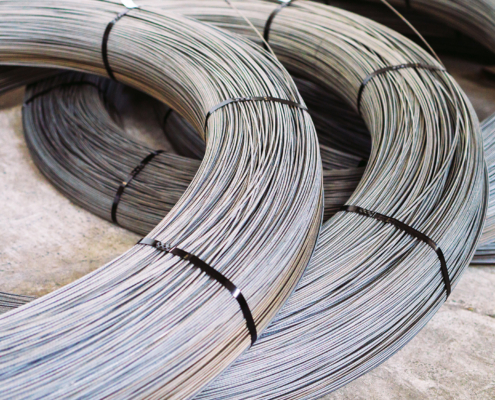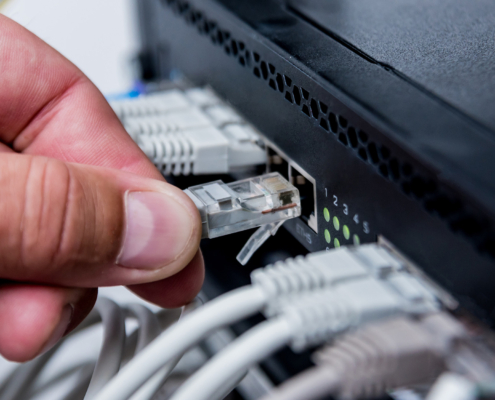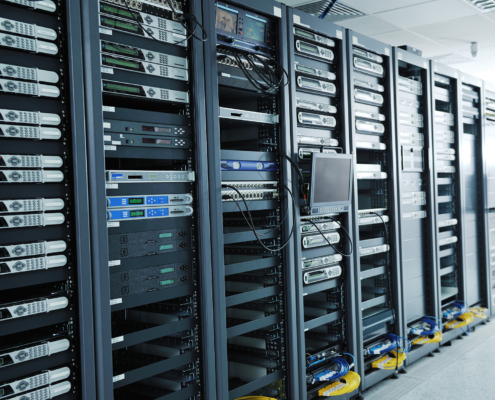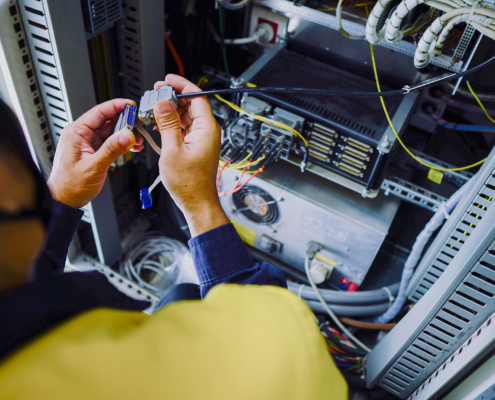 https://ringandping.com/wp-content/uploads/2025/07/How-Poor-Cabling-Can-Disrupt-Your-Warehouse-Operations.jpg12502000Abstrakt Marketing/wp-content/uploads/2024/05/ringandping_logo.svgAbstrakt Marketing2025-07-28 07:41:112025-08-15 13:42:30How Warehouse Cabling Problems Can Disrupt Your Operations
https://ringandping.com/wp-content/uploads/2025/07/How-Poor-Cabling-Can-Disrupt-Your-Warehouse-Operations.jpg12502000Abstrakt Marketing/wp-content/uploads/2024/05/ringandping_logo.svgAbstrakt Marketing2025-07-28 07:41:112025-08-15 13:42:30How Warehouse Cabling Problems Can Disrupt Your OperationsCategory 5 and Category 6 cables are both Ethernet cables that use twisted pair copper wires. Looking at them, you wouldn’t be able to tell the difference, aside from the name being printed on the cable cover, but below that outer covering are small differences that can make a big impact in performance. Cat5 cables are the most basic Ethernet cable. The speed is limited to a maximum of 100 Mbps for Cat5 cables at a bandwidth of 100 Mhz. These cables are nearly obsolete today and have been replaced by the Cat5e cables. Even if you could get your hands on them you wouldn’t want to use them when the newer alternatives are so much better. The e in Cat5e stands for enhanced. Enhancements include reduced crosstalk and much greater speed, up to 1000Mbps, also known as a gigabit. Bandwidth on these cables is 100 Mhz. Cat6 cables are the top of the line in Ethernet cables with speeds of up to 10 Gbps and 250 Mhz bandwidth, more than double Cat5e bandwidth. Cat6 cables also have an internal separator to reduce interference and crosstalk. Cat5 vs Cat6 – Which Network Cable Should You Use? If top performance is a must, you’ll want to go ahead and spend a little more for the Cat6 cable. Fewer errors, less noise and faster data transmission make it worth the 10-20% extra cost for most corporate or office environments. Going with the Cat6 cable will also help future-proof your network against upcoming changes or advances in networking technology. Data production and storage need is continuing to grow exponentially year after year and shows no sign of slowing down. The Computer Science Corporation has predicted a 4300% increase in annual data generation by 2020. If you know you will be in your current building for a substantial amount of time, your productivity depends on top network speeds, and you have the budget for it, Cat6 is the way to go. You’ll also want to check with the local laws and ordinances, if they specify what type of cable you can use there is no choice to make and you will have to install whichever they have specified. The Cat5e cable is still suitable for most home networking needs. For regular home computer use, you wouldn’t notice a big difference between performance of cat5e and cat6 network cables. Simply switching the cable running between your wall jack and computer will not result in higher network or Internet speed. To actually get the full speed capabilities of Cat6 cabling, every component in the network must be gigabit rated — every switch, hub, interface card, and all of the cabling behind the walls must also be updated. However if you use your home computer for heavier lifting like transferring large files between computers, it may be worth it for you to upgrade all of your components to Cat6. For more information on the pros and cons of Cat5 vs Cat6 network cabling or for a free consultation to discuss your company’s specific needs, contact us today by clicking here or give us a call at (714) 617-4025.
Share This Post
More Like This
 https://ringandping.com/wp-content/uploads/2025/07/How-Poor-Cabling-Can-Disrupt-Your-Warehouse-Operations.jpg12502000Abstrakt Marketing/wp-content/uploads/2024/05/ringandping_logo.svgAbstrakt Marketing2025-07-28 07:41:112025-08-15 13:42:30How Warehouse Cabling Problems Can Disrupt Your Operations
https://ringandping.com/wp-content/uploads/2025/07/How-Poor-Cabling-Can-Disrupt-Your-Warehouse-Operations.jpg12502000Abstrakt Marketing/wp-content/uploads/2024/05/ringandping_logo.svgAbstrakt Marketing2025-07-28 07:41:112025-08-15 13:42:30How Warehouse Cabling Problems Can Disrupt Your Operations
5 Ways Your Business Can Benefit From Improved Warehouse Cabling in Orange County

The Top LA Warehouse Network Cabling Challenges

Common Warehouse Network Issues and How to Avoid Them at Your Facility

Why Reliable Network Cabling is Vital for Large Warehousing Operations

The Role of Network Cabling in Modern Warehouses

Choosing the Right Network Cabling for Your Warehouse: A Complete Guide

Premise Distribution Systems (PDS) and Why Fiber Optics Are the Future



